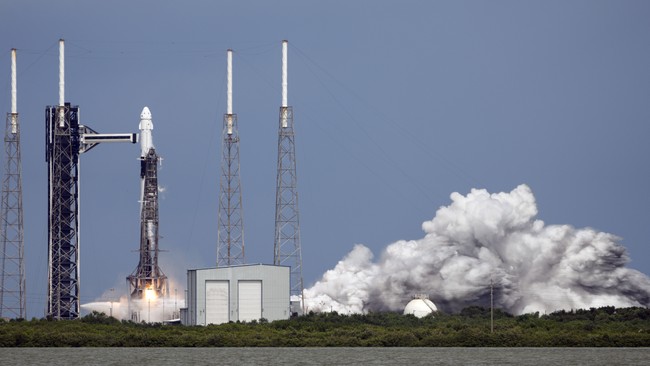We support our Publishers and Content Creators. You can view this story on their website by CLICKING HERE.

It’s a rule nearly as old as human language itself. What goes up, must come down. NASA finally managed to violate that rule a few times in recent decades when it launched missions taking vehicles so far away from the Earth that they wouldn’t return on their own (such as Voyager) or dumped them on other planets they couldn’t escape from, like the Mars landers. But for the most part, the rule has held true. The same can be said for the International Space Station. Nearly everyone at NASA agrees that the ISS needs to be deorbited at some point, likely by 2030, give or take a couple of years. But there is a key difference that makes the ISS unique in this regard. The ISS was sent up in many stages and assembled in orbit. The total craft now weighs in excess of 400 tons. Bringing it down safely is easier said than done. (Space News)
Advertisement
NASA is faced with the challenge of safely deorbiting, in one fell swoop, over 400 tons of space hardware in a few years. As of now, the agency plans on deorbiting the International Space Station in early 2031 by dragging it back toward Earth and dumping it into an isolated patch of the Pacific Ocean — an idea that has scientists and environmental watchdogs ringing alarm bells.
As recently reported by the NASA Office of Inspector General (OIG), the orbital outpost is plagued by ongoing wear-and-tear issues, such as cracks and air leaks, after decades of use.
NASA has examined and rejected several options for decommissioning the ISS, including disassembly and return to Earth, storing the facility in a higher orbit and even a natural orbital decay scenario with uncontrolled reentry. Instead, NASA concluded in a white paper that “using a U.S.-developed deorbit vehicle, with a final target in a remote part of the ocean, is the best option for station’s end of life.”
The contract for creating what’s come to be known as the “United States Deorbit Vehicle (USDV)” was awarded to SpaceX at a cost of $843 million. A specially modified Falcon Heavy rocket will be equipped with extra thrusters designed to force the ISS into a powered, destructive nose-dive. SpaceX has plenty of experience in crashing rockets at this point, so this should be right up Elon Musk’s ally. But the question is, where and how do you force a 400-ton machine down from space and into the ocean without creating some sort of navigation hazard?
Advertisement
Smaller components from space tend to burn up in the atmosphere during reentry, but the ISS components were specifically designed to avoid that fate. So where can Musk land it and what sort of travel hazards might that entail? The go-to destination is known as Point Nemo, formally dubbed “the pole of inaccessibility.” The location earned that name by being the furthest point from any land on the planet, located off the coast of Antarctica.
Some scientists are already protesting the decision, however. They claim that the space remnants are toxic to the marine environment and can release harmful byproducts over time. They draw a comparison between this and the decision to dump unspent ammunition from World War 2 into the ocean, a decision that led to many serious issues in the modern era. But what other options does that leave us with? The ISS is coming down at some point, either with help from us or on its own.
Noboby seems to like this plan, but even the EPA is calling it “the least worse option.” In any event, the time to have thought about this was decades ago when we first began sending components into orbit, not now. The die has been cast and we apparently don’t have a plan B.
Advertisement

 Conservative
Conservative  Search
Search Trending
Trending Current News
Current News 





